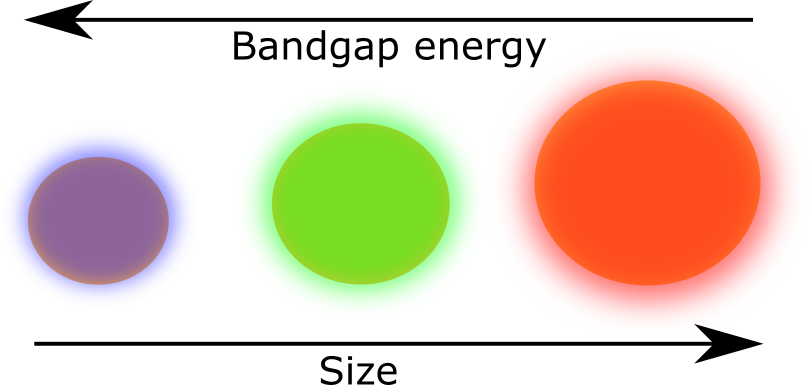Photonic lab-on-a-chip (LOC) platforms are very promising devices for performing portable bio-chemical analysis because they achieve extreme sensitivity while showing a rapid and easy-to-use operation. The analyte sensors, signal detectors and the light sources that are needed for the analysis can be all integrated on the same chip (see Figure 1). However, actually nowadays LOCs still rely on bulk light sources that are off the chip to operate due to the complex integration method of the active material used for the light emission of the light source. This hinders their actual portability and potential for commercial realization.

sourcing, waveguiding, analyte sensing, signal detection and processing. Image made by Benjamin Prat.
We propose a Quantum Dot-based Light Emitting Diode (QD-LED) as a structure that allows light emission on chip upon the application of a bias voltage (~2V-5V) provided by a small portable battery. The QD-LED is a multilayered structure (see Figure 2) composed of colloidal Quantum Dots (QDs), sandwiched between an Electron Transport Layer (ETL) and a Hole Transport Layer (HTL), contacted by electrodes.

structure of a QD-LED. The ETL and HTL layers enable the injection and transport of electrons and holes, respectively, from the electrodes to the QDs upon the application of an electric field across the structure.
The QDs are luminescent semiconductor nanoparticles that emit light due to the recombination of an electron with a hole. They are a very promising gain material due to their outstanding photoluminescent properties, tunability of the emission (see Figure 3) and simple integration on chip via spin-coating. In fact, apart from the electrodes, the different layers of the QD-LED are fabricated by spin-coating, which makes the QD-LED integration on chip rapid and low cost.

The light emitted by the QD-LED must be confined and guided along the chip to the region of analysis. That is why we will combine photonic structures such as waveguides or gratings with the QD-LED to obtain an on-chip light source.
For more information about this research topic, contact Iago R. Diez.